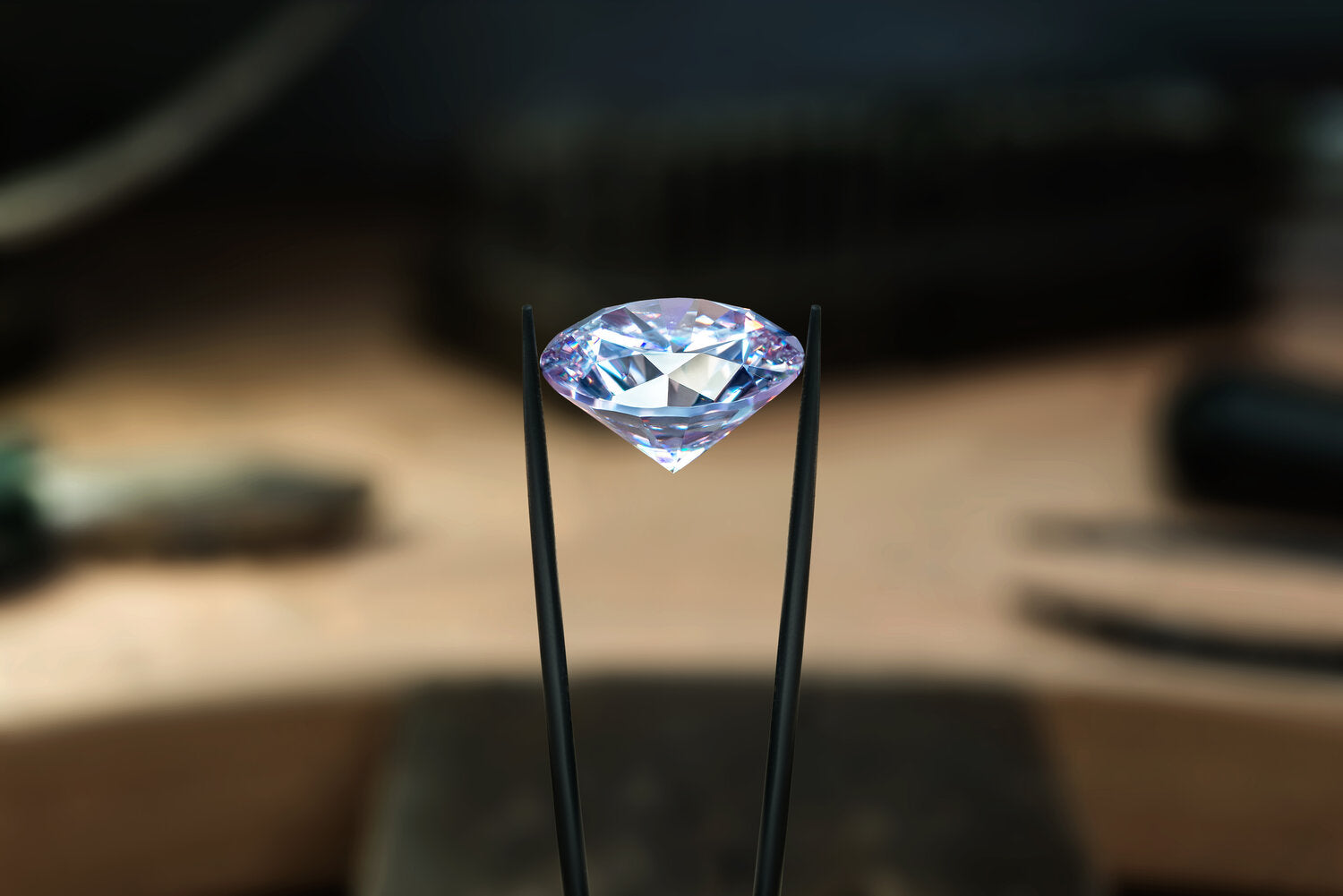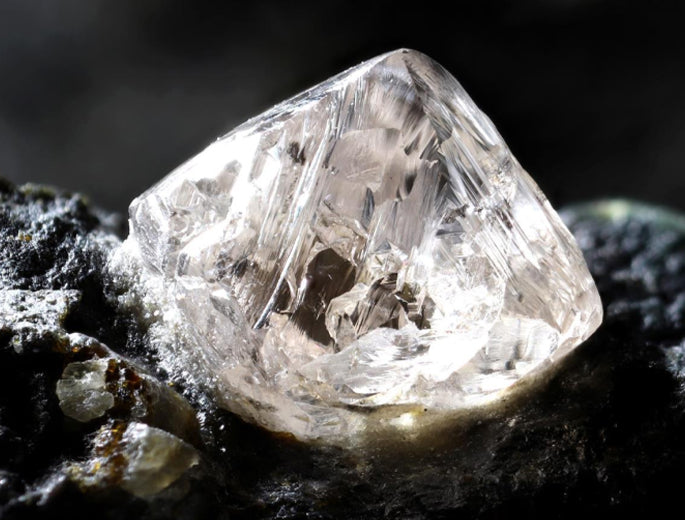WHAT IS A LAB GROWN DIAMOND?

Lab grown diamonds are sometimes referred to as man-made or created diamonds. They are produced in a laboratory setting without the negative environmental or human toll of mining.
Lab grown diamonds are physically identical to mined diamonds. The only difference between the two is point of origin.
Lab grown diamonds share an identical growing process to mined diamonds. They form first as carbon atoms under high temperature and immense pressure, then bond together to grow a crystalline lattice structure. Once fully formed, they are cut and polished to reveal maximum brilliance. Like mined diamonds, lab-grown diamonds come in a variety of color and clarity grades. Lab grown diamonds are also known as man-made or created diamonds. They are produced in a laboratory setting without the negative environmental or human impact of mining. Lab created diamonds grow in the same way that mined diamonds do; they begin as carbon atoms under extreme heat and pressure, then bond together to form a crystalline lattice structure. They are cut and polished once fully formed to reveal maximum brilliance. And just like mined diamonds, they come in a variety of color and clarity grades.

How are Lab Grown Diamonds made?
There are two different ways to create diamonds in the lab: Chemical Vapor Deposition (CVD) and High Pressure-High Temperature (HPHT).
When it comes to Chemical Vapor Deposition (CVD), a tiny "seed" diamond is heated to a high temperature inside a tightly closed chamber.
The chamber is then filled with a carbon-rich gas mixture such, including methane, and then they are ionized into plasma by technology. The ionization breaks molecular bonds into gases, and the diamond seeds slowly crystallize.
In the High Pressure-High Temperature (HPHT) process the diamond seed is exposed to extreme temperatures and pressure. As the carbon melts, a diamond forms around the seed. Once it has cooled, a diamond is created as beautiful as the one made in nature.

How fast do CVD diamonds grow?
The speed of a CVD diamond’s growth depends on the end-goal size of the stone and the efficiency of the technologies used. Top CVD diamond producers can create 1ct diamonds in less than a month, and slightly smaller diamonds in as little as two weeks. Fancy colour diamonds, like yellow CVD diamonds, can take between 5 and 10 days, because the nitrogen added to create the yellow colour speeds up the crystallisation process.

How do you identify a CVD diamond?
It is not possible to identify a CVD diamond apart from a natural diamond without specialist laboratory equipment and gemological knowledge.
As Lab grown diamonds are completely chemically and physically identical to a natural diamond it is impossible to differentiate the two with naked eye. Just like natural diamonds, CVD diamonds can be found in a range of qualities and grades - but compare two with the same grades and you wont see a difference. This is great news for CVD diamond buyers, who might otherwise worry that a CVD diamond could appear fake or different from a natural diamond.
When you buy a CVD diamond, make sure it is certified GIA or IGI. The accompanying certificate will outline whether the diamonds are natural or lab created via CVD or HPHT - and crucially, whether the diamond has required a post-growth treatment to get it looking up to scratch. Diamonds with post-growth treatments are best avoided.

Why are lab created diamonds considered ethical?
After all, there are many reasons why laboratory-grown diamonds are even a better alternative and are considered ethical luxury. In addition to all their unparalleled beauty, they are much more environmentally friendly than their equivalents from mining – it's impossible not to appreciate them.
We have a wide selection of loose diamonds for you to browse. You're just one click away from finding beautiful and earth-friendly gems for your loved ones.
